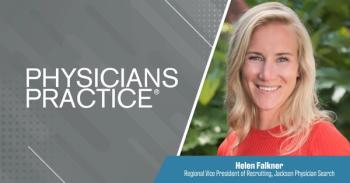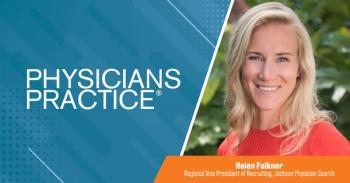
Upgrade Your Medical Practice Performance by Evaluating Staff
For some operating their office to simply get the work done is preferred. But your practice can be more forward-thinking. Here's how.
I had a physician recently tell me that their office's operations style was "organized chaos," or the idea that amidst all craziness, they were doing what it took to get by. In other words, they had essentially ignored most individualized performance factors and replaced them with the simplified question: "Are basic processes getting completed?"
When I heard the words "organized chaos" describing a medical practice, I immediately had to consider whether the concept of disorganization producing processes was more the norm than the exception. Is it entirely possible, that the idea of organized chaos may actually be the preferred style for a practice on the operations side? If we take that a step further, is it possible that the majority of medical practices are set up to do just enough in order to address current processes only?
I am concerned that the answer to both is likely a resounding "Yes." The important work to create a sound business that is profitable and focused on delivering patient care has too often been a "one or the other" option. Sadly, the back-office individuals tend to represent a mix of the highest talent at the lowest cost and therefore the talent is too often restricted by the position that fits only a narrowly defined current need in the practice.
Medical Practices and The Assembly Line Effect
Is it reasonable to expect each employee to have some intertwined element in their job role that ties together their position alongside others within the practice? If not, we are essentially creating a type of assembly line effect where the job definition and role is only capable of executing on the status quo and they are seen as a cog in a business process, rather than an important element of a strategy.
In a recent webinar, Medical Group Management Association expert and consultant Nancy Babbitt suggested that new hires should go through an orientation process that includes accounts receivable, practice marketing, and understanding practice culture, regardless of their position. The idea within was that each employee should have a strong recognition of: 1.) the roles of each of their colleagues and the importance each means to the practice; and 2) where each employee's flexibility within their role is in order to deliver a practice-altering effort.
Think of what a powerful statement that is toward any new hire. While it may come across at face value that there is more expected of the employee, the actual thought is that the practice is placing the investment and empowerment into the employee to reach new heights and seek out new opportunities while helping the practice achieve its goals. This represents a true departure from orientations of the past where medical practice job roles are reiterated and factory-like in their repetition and the result is completely reliant on the person's ability to perform the repetitive tasks efficiently versus their ability to add value to the practice.
In fact, it was also in this same webinar, where Babbitt separated those various skills into physician-facing and those that are business-facing. The fact that she separated the two highlights the immediate need to create a practice environment that melds together the interests of the physician even tighter with those of the practice.
Breaking Through from the Status Quo
If you subscribe to the thought that practices, much like any other established business, are built to operate repetitively and reactively, then you would also carry the belief that the road to go from status quo to forward-thinking would seem extremely difficult. Progressive organizations of all sizes and types prefer to carry the "start-up mentality" banner as it represents a willingness to seek new channels and ideas into business operations, although you don't hear practice managers or physicians volunteering themselves as start-up oriented - I wonder why that is.
I believe the first, and seemingly most simplified step, is to determine practice goals built on both performance as well as the strategic objectives of the practice. Once those goals are determined, I would ask the staff how their role connects to those overall goals and objections, how they can help the practice achieve them, and what benefit they receive by helping achieve them.
The next step would be to allot time for each employee to take on one of the objectives and make them the "strategic champion" of the objective. By allocating time to tasks outside of executing on the normal day-to-day tasks, the person is able to express themselves and help with turning their creativity into results, the employee now has both the flexibility and the enticement to complete tasks in a swift manner, while understanding how that helps the practice overall.
Now -before this is considered to be blasphemous on the grounds that it pushes already stressed employees to the breaking point -reconsider how having more creative and versatile team members can have a negative impact on the practice. This redefinition of role is simply suggesting to each employee that there are ways to positively impact the practice that will reset the thinking of their existing roles. If we are to instill the mentality of a start-up (at least, privately), then we can create a team member that is both valuable (yes, even more so) and aligns to the aggressive goals of the practice.
Finally, I would suggest that the third step would be to create measureable goals that can be audited for effectiveness. While we briefly touched on them with expanding the role of the employee, this speaks to enforcing the concept that there are some people and processes that are negatively impacting the practice. If we are to address the first two steps of process and people, then we must also consider how setting goals and aligning people, while objectively reviewing the results, can turn any practice away from the status quo.
Newsletter
Optimize your practice with the Physicians Practice newsletter, offering management pearls, leadership tips, and business strategies tailored for practice administrators and physicians of any specialty.




